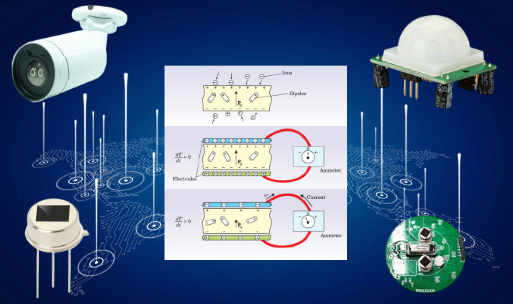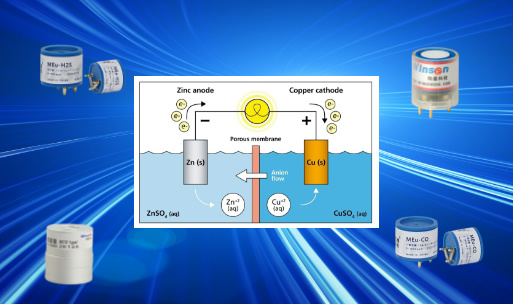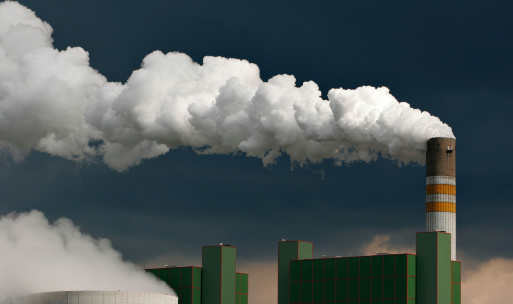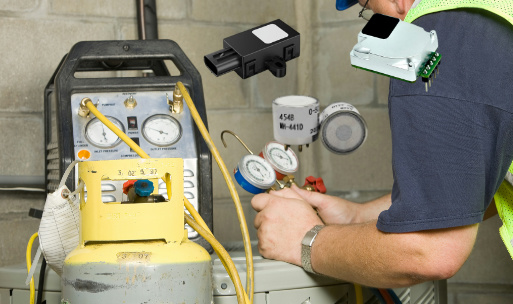Dual Gas Detection in Water Heaters, Monitoring Natural Gas and Carbon Monoxide
Water heaters are essential household appliances providing hot water for daily activities like bathing, cooking, and cleaning. While they enhance comfort and convenience, they can also pose significant risks if not properly managed. Specifically, water heaters that run on natural gas or propane can be sources of gas leaks and carbon monoxide (CO) emissions, both of which present serious hazards. This article delves into the importance of dual gas detection in water heaters, focusing on the detection of natural gas and carbon monoxide, and providing a comprehensive overview of how these systems work, their benefits, and best practices for installation and maintenance.

Understanding the Risks
Natural Gas Leaks
Natural gas, primarily composed of methane, is a highly efficient and cost-effective fuel source. However, it is also highly flammable and can form explosive mixtures with air. A natural gas leak can occur due to faulty installation, wear and tear, or damage to the gas lines. The risks associated with natural gas leaks include:
- Explosion: A significant build-up of natural gas in an enclosed space can lead to explosions.
- Fire: Even a small leak can ignite and cause a fire, posing a risk to property and life.
- Health Issues: Inhaling natural gas can lead to symptoms like headaches, dizziness, nausea, and in severe cases, asphyxiation due to oxygen displacement.
Carbon Monoxide Emissions
Carbon monoxide is a colorless, odorless gas produced by the incomplete combustion of fuels such as natural gas, propane, oil, and wood. CO is often referred to as the "silent killer" because it is undetectable by human senses. The dangers of carbon monoxide include:
- Health Risks: CO binds with hemoglobin in the blood more effectively than oxygen, reducing the blood's oxygen-carrying capacity. Symptoms of CO poisoning include headaches, dizziness, weakness, nausea, vomiting, chest pain, and confusion. Prolonged exposure can lead to brain damage and death.
- Silent Danger: Because CO is odorless and colorless, it can accumulate without detection, making it particularly dangerous in enclosed spaces.
The Importance of Dual Gas Detection
Given the serious risks associated with natural gas leaks and carbon monoxide emissions, dual gas detection systems in water heaters are crucial for safety. These systems monitor both natural gas and CO levels, providing early warning signs of leaks and emissions, thus preventing potential disasters.
How Dual Gas Detectors Work
Dual gas detectors are sophisticated devices designed to monitor and detect the presence of both natural gas and carbon monoxide in the environment. These detectors typically consist of the following components:
- Sensors: The core of the detector includes sensors specific to each gas. Natural gas sensors detect the presence of methane, while CO sensors detect carbon monoxide levels.
- Alarm System: When the sensors detect gas levels above the safety threshold, the alarm system is triggered. This can include audible alarms, visual alerts, and notifications to connected devices.
- Microcontroller: This component processes the signals from the sensors and manages the alarm system. It ensures accurate readings and timely alerts.
- Power Supply: Dual gas detectors require a reliable power source, often including battery backups to ensure functionality during power outages.
Dual Gas Detection Module ZE33
The module is designed for gas heater to detect natural gas (methane CH4) leakage and carbon monoxide gas produced by incomplete combustion of the natural gas. The module uses combustible gas sensor and electrochemical carbon monoxide gas sensor optional according to clients requirement. The module has sound and light alarm output, and PWM digital signal output mode, and has good selectivity and stability.

Types of Sensors Used
Catalytic Sensors
Commonly used for natural gas detection, these sensors work by oxidizing the gas on a catalytic bead, causing a change in temperature that is measured and converted into an electrical signal.

The ZC13 household gas module utilizes a catalytic combustion sensor and offers the essential functions for a digital display household gas leak alarm. These functions include:
- Digital Signal Output via UART
- Status Indication
- Buzzer
- Relay
- Switching Signal Output for Electromagnetic Valve
Additionally, the module supports the resetting of alarm values.
Electrochemical Sensors
Used for CO detection, these sensors generate an electrical current when CO interacts with the sensor's chemical solution. The current is proportional to the CO concentration.
| Product Model | ZE15-CO | ZE16B-CO | ZE18-CO |
| Detection Gas | Carbon Monoxide | Carbon Monoxide | Carbon Monoxide |
| Output Data | UART Output | UART Output | UART |
| Operating Voltage | 5-12V DC | 5-12V DC | 5.0±0.2V DC |
| Preheating Time | 30 seconds | 30 seconds | 30 seconds |
| Response Time | ≤30 seconds | ≤30 seconds | ≤30 seconds |
| Recovery Time | ≤30 seconds | ≤30 seconds | ≤30 seconds |
| Measurement Range | 0~500ppm | 0~500ppm | 0~500ppm |
| Resolution | 0.1ppm | 1ppm | 1ppm |
| Operating Temperature | -10℃~55℃ | -10℃~55℃ | -10℃~55℃ |
| Operating Humidity | 15%RH-90%RH (non-condensing) | 15%RH-90%RH (non-condensing) | 15%RH-90%RH (non-condensing) |
| Lifespan | 3-5 years (in air) | 2 years (in air) | 3-5 years (in air) |
Semiconductor Sensors
These sensors use a semiconductor material whose electrical conductivity changes in the presence of gas. They are versatile and can detect a range of gases, including methane and CO.

The ZP14 household gas module utilizes a thick film semiconductor sensor and offers the basic functions required for a household gas leak alarm. These functions include:
- Status Indication
- Buzzer
- Relay
- Switching Signal Output for Electromagnetic Valve
Additionally, the module supports the resetting of alarm values.
| Specification | ZP14 | ZC13 |
| Detection Gas | Natural Gas | Natural Gas |
| Sensor Type | Flat MP Series | Catalytic Series |
| Response Time | ≤ 30 s | ≤ 10 s |
| Recovery Time | ≤ 30 s | ≤ 30 s |
| Operating Voltage | DC (3~5) V | DC (5±0.1) V |
| Operating Current | < 80 mA | (155±10) mA |
| Detection Range | 0-5000 PPM | 1%-25% LEL |
| Resolution | 50 PPM | 100 PPM |
| Accuracy | ±3% LEL | - |
| Preheating Time | - | 3 minutes |
| Lifespan | 5 years | 5 years |
| Operating Temperature | -10~55 ℃ | -10~55 ℃ |
| Operating Humidity | 20%~90% RH | 20%~90% RH |
| Storage Temperature | -20~60 ℃ | -20~60 ℃ |
| Storage Humidity | 20%~65% RH | 20%~65% RH |
Benefits of Dual Gas Detection Systems
Enhanced Safety
The primary benefit of dual gas detection systems is enhanced safety. By continuously monitoring both natural gas and CO levels, these systems provide early warnings, allowing occupants to take action before concentrations reach dangerous levels. This can prevent explosions, fires, and health hazards associated with gas leaks and CO poisoning.
Compliance with Regulations
Many regions have stringent safety regulations requiring the installation of gas detection systems in residential and commercial properties. Dual gas detectors help property owners comply with these regulations, avoiding legal penalties and ensuring the safety of occupants.
Peace of Mind
Knowing that a reliable system is in place to detect potentially dangerous gas leaks provides peace of mind to homeowners and property managers. It allows them to focus on their daily activities without constantly worrying about gas-related hazards.
Cost Savings
Early detection of gas leaks and CO emissions can prevent costly damage to property and reduce the need for extensive repairs. Moreover, it can avoid the financial and emotional costs associated with health issues resulting from gas exposure.
Conclusion
Dual gas detection systems in water heaters are essential for ensuring safety and preventing potentially catastrophic events related to natural gas leaks and carbon monoxide emissions. By understanding the risks, benefits, and best practices for installation and maintenance, homeowners and property managers can effectively protect their properties and occupants. Investing in advanced dual gas detectors with smart features further enhances safety and provides peace of mind. As technology continues to evolve, these systems will become even more integral to modern safety protocols, ensuring that we can enjoy the comforts of our homes without compromising on safety.










